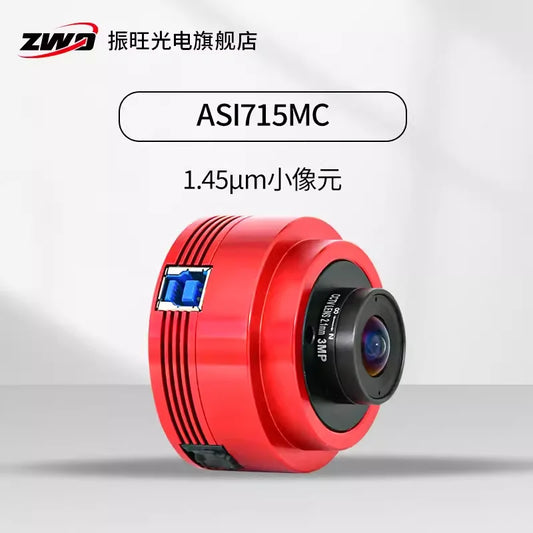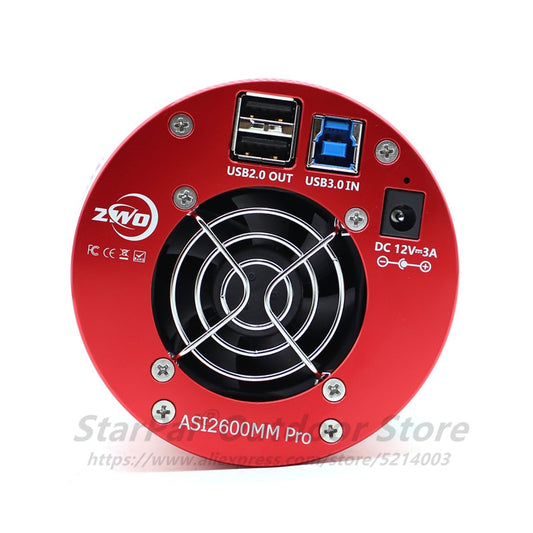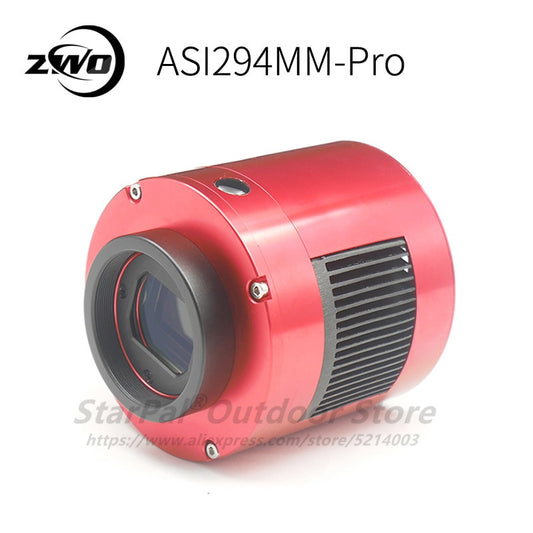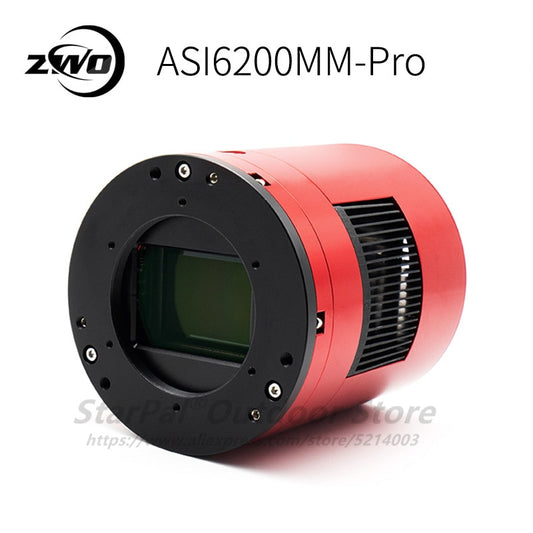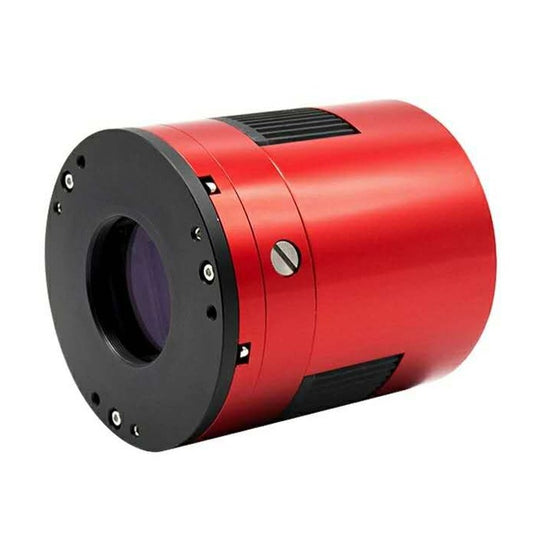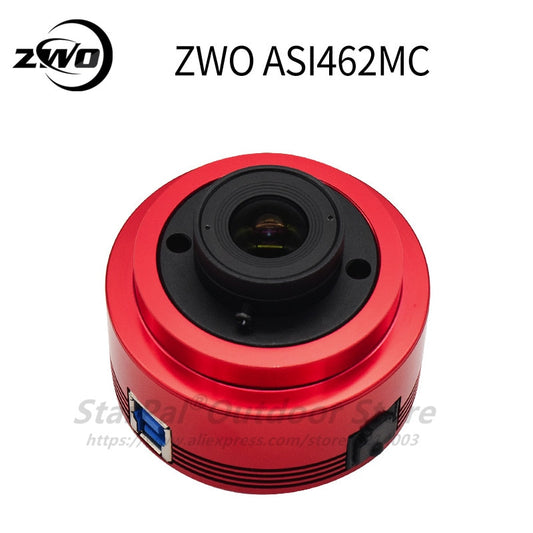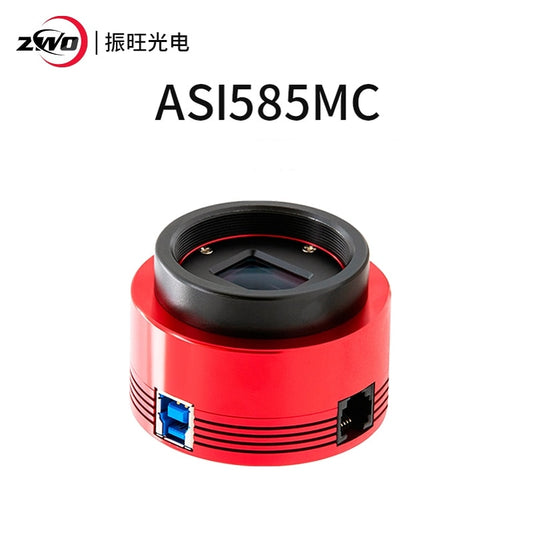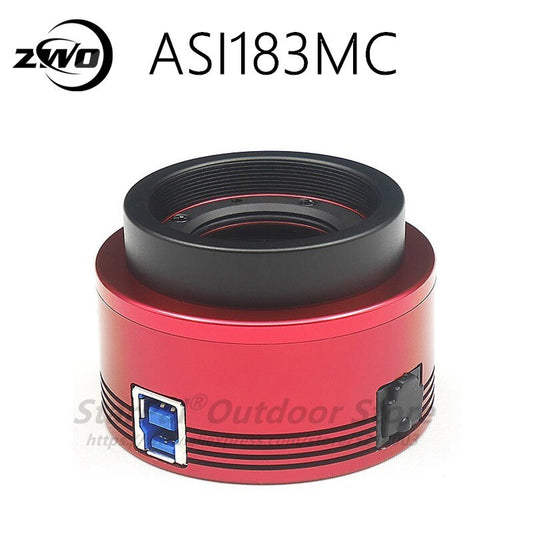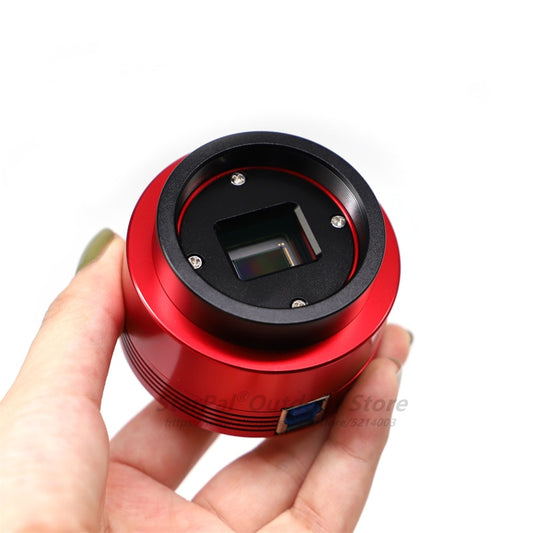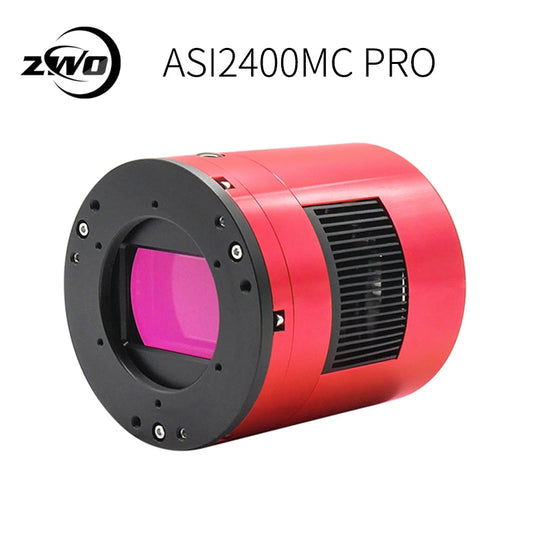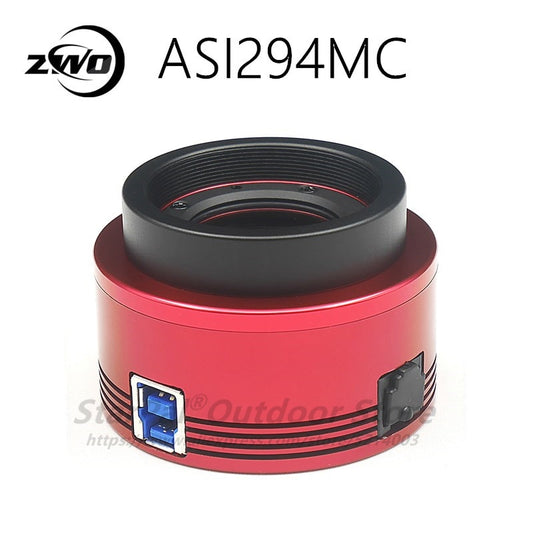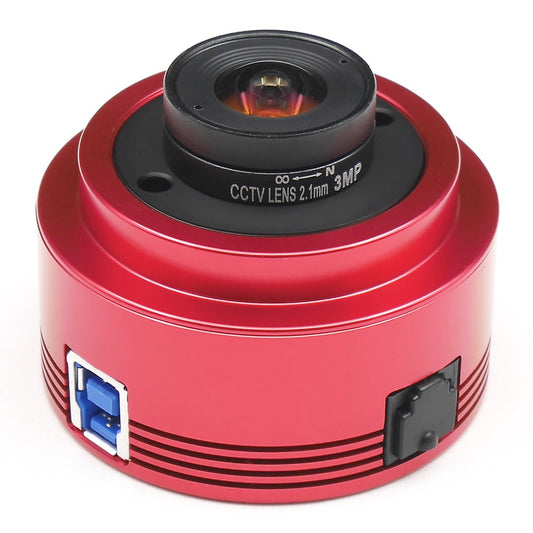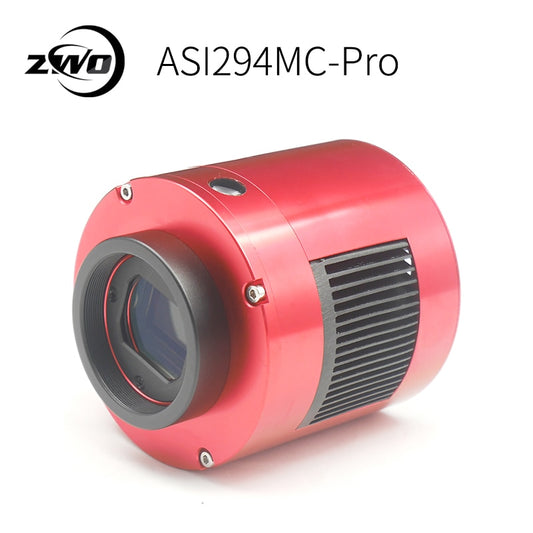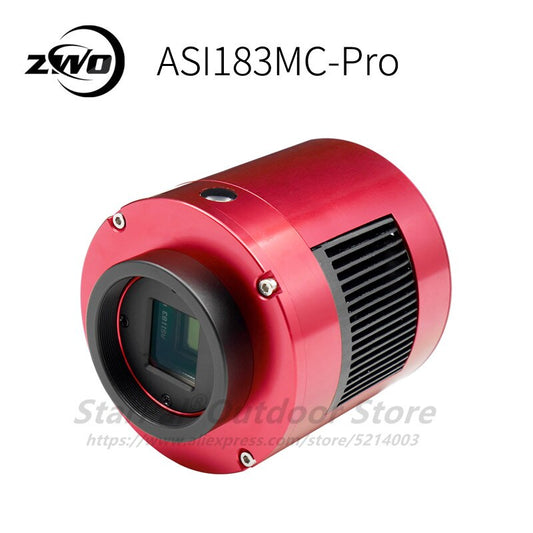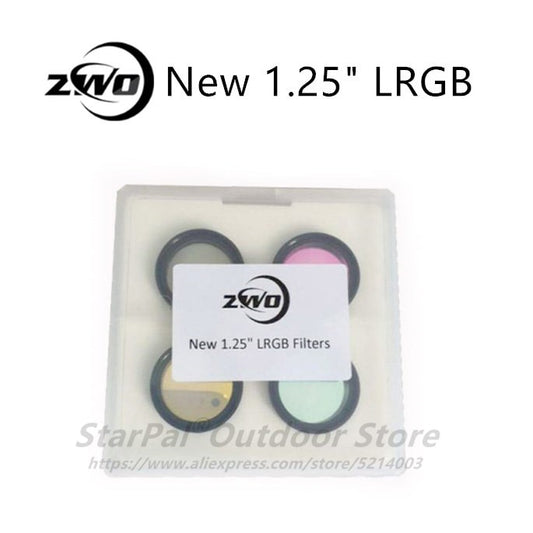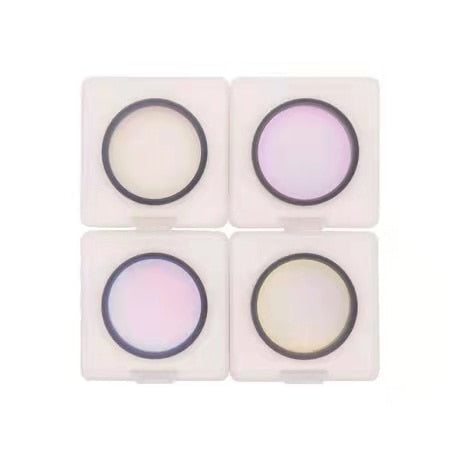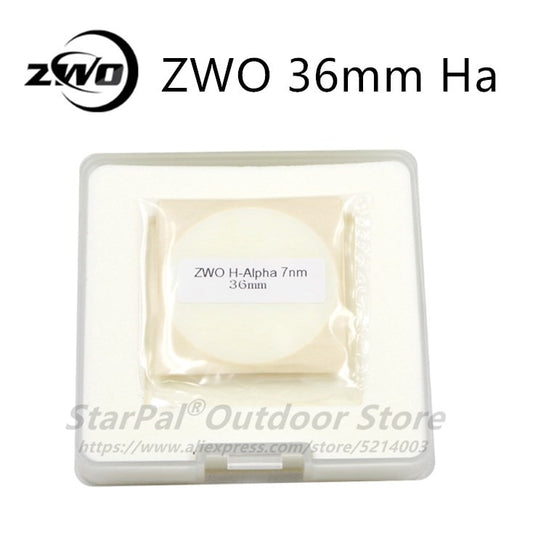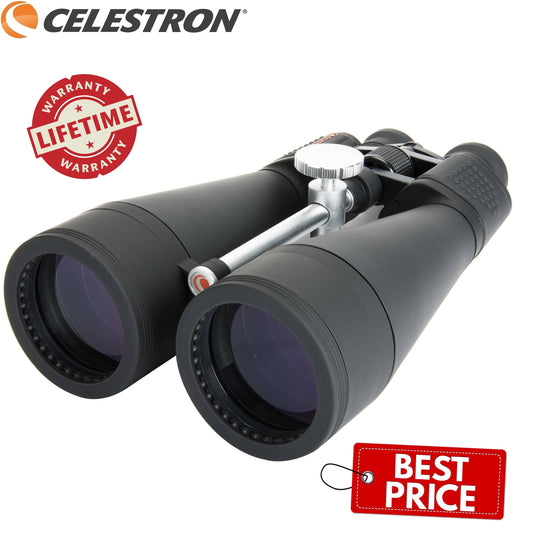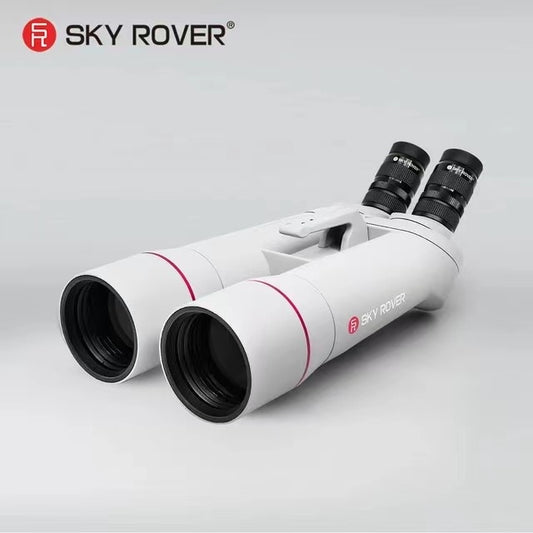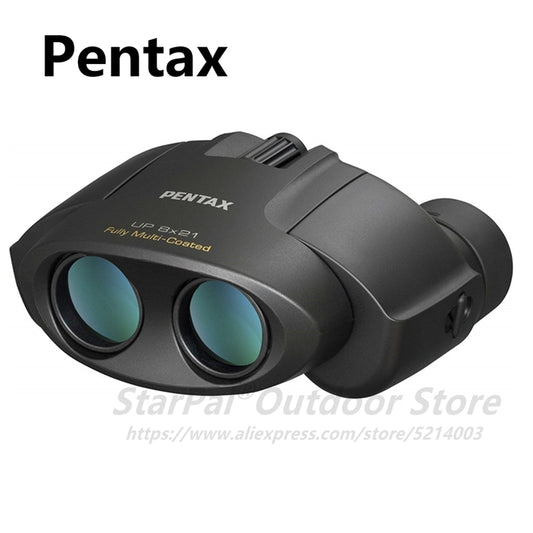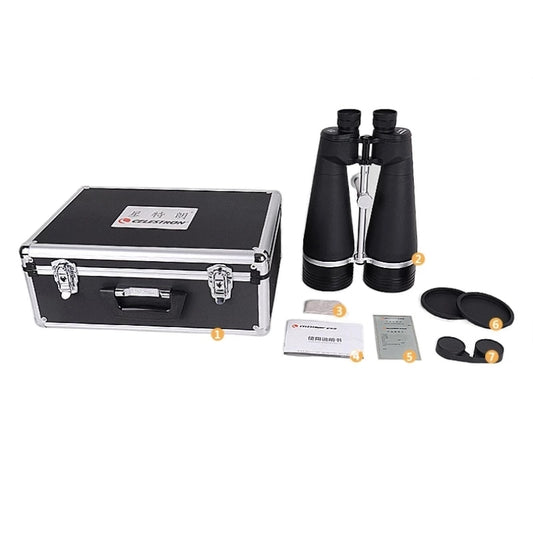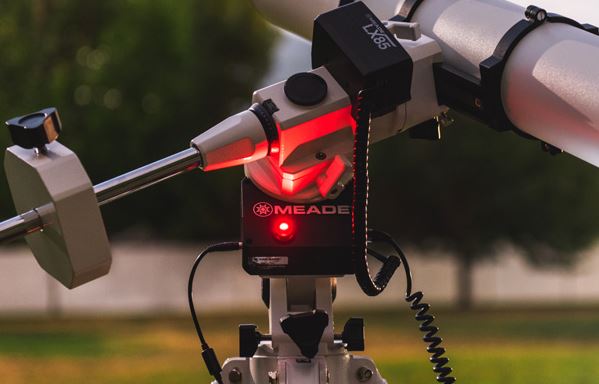Comparing ZWO ASI290MC vs. ZWO ASI224MC: A Detailed Astrophotography Showdown
Astrophotography enthusiasts are constantly on the lookout for the best tools to capture the wonders of the night sky. In the realm of color astronomy cameras, two popular contenders are the ZWO ASI290MC and ZWO ASI224MC. This blog post dives into an in-depth comparison of these two cameras, dissecting their features, capabilities, and what sets them apart for capturing the celestial splendors.
ZWO ASI224MC vs ZWO ASI290MC
Here's a simplified breakdown of the main differences between the ZWO ASI290MC and ZWO ASI224MC:
ZWO ASI290MC:
- Higher resolution (2.13 megapixels) for detailed planetary and lunar imaging.
- Larger pixel size (2.9µm) for excellent sensitivity to faint details.
- Maximum frame rate of 170 fps, great for fast-moving objects.
- Broad exposure range and high dynamic range for versatile imaging.
- Cooling system reduces thermal noise during longer sessions.
- Ideal for planetary and lunar imaging.
ZWO ASI224MC:
- Lower resolution (1.2 megapixels) but still capable for various imaging.
- Smaller pixel size (3.75µm) might capture less faint detail.
- Maximum frame rate of 150 fps, suitable for high-speed phenomena.
- Good dynamic range for shorter exposures.
- No active cooling, potential for increased thermal noise.
- More versatile for deep-sky imaging.
ZWO ASI290MC and ZWO ASI224MC are two distinct astronomy cameras catering to different imaging preferences. The ZWO ASI290MC offers a larger sensor size, making it suitable for capturing wider celestial views. It boasts higher resolution and is ideal for detailed planetary and deep-sky imaging. On the other hand, the ZWO ASI224MC presents a smaller sensor, which allows for faster frame rates and is excellent for planetary imaging, particularly for capturing fast-moving objects like the Moon and planets. Choosing between these cameras depends on the specific celestial subjects you wish to capture and your imaging goals.
In short, the ZWO ASI290MC offers higher resolution and sensitivity, making it great for detailed planetary and lunar imaging. The ZWO ASI224MC, while having a lower resolution, is versatile for capturing various celestial objects, particularly in the deep-sky realm. Your choice depends on whether you prioritize detailed planet imaging or capturing a range of celestial wonders.
ZWO ASI290MC vs ZWO ASI224MC Specifications
Here's a comprehensive specifications table detailing the differences between the ZWO ASI290MC and ZWO ASI224MC:
| Specification | ZWO ASI290MC | ZWO ASI224MC |
|---|---|---|
| Sensor Type | Color CMOS | Color CMOS |
| Sensor Model | Sony IMX290 | Sony IMX224 |
| Sensor Resolution | 1936 x 1096 (2.13 MP) | 1304 x 976 (1.2 MP) |
| Pixel Size | 2.9µm | 3.75µm |
| Frame Rate | Up to 170 fps | Up to 150 fps |
| Dynamic Range | 12 stops | 8 stops |
| Cooling System | Yes (TEC cooling) | None |
| Exposure Range | 32µs - 2000s | 32µs - 1000s |
| Autoguiding Capable | Yes | Yes |
| Mount Compatibility | Standard 1.25" or 2" eyepiece holders | Standard 1.25" or 2" eyepiece holders |
| Software Compatibility | SharpCap, FireCapture, ASIStudio, and more | SharpCap, FireCapture, ASIStudio, and more |
| Weight | Approx. 410g (0.9 lbs) | Approx. 410g (0.9 lbs) |
| Imaging Applications | Planetary, lunar, and deep-sky imaging | Planetary, lunar, and deep-sky imaging |
| Price Range | Varies based on configuration and accessories | Varies based on configuration and accessories |
This comprehensive specifications table provides a detailed breakdown of the differences between the ZWO ASI290MC and ZWO ASI224MC in terms of sensor type, resolution, pixel size, frame rate, dynamic range, cooling system, exposure range, autoguiding capability, software compatibility, mount compatibility, weight, imaging applications, and price range. These specifications offer valuable insights for astronomers and astrophotographers looking to select between these two cameras based on their specific imaging goals and requirements.
Resolution and Sensor
The ZWO ASI290MC boasts a 2.13-megapixel CMOS sensor, while the ZWO ASI224MC features a 1.2-megapixel CMOS sensor. The ASI290MC provides higher resolution, making it well-suited for capturing detailed planetary and lunar images.
Pixel Size and Sensitivity
The ASI290MC's pixel size of 2.9µm offers excellent sensitivity and is perfect for capturing faint details. In contrast, the ASI224MC's smaller pixel size of 3.75µm contributes to faster image capture but may not be as sensitive as the larger pixel size of the ASI290MC.
Frame Rate and Video Capture
With a maximum frame rate of 170 fps at full resolution, the ASI290MC excels in capturing fast-moving celestial objects. The ASI224MC follows closely with a 150 fps maximum frame rate, suitable for recording high-speed astronomical phenomena.
Exposure Range and Gain
The ASI290MC offers a broad exposure range, making it versatile for various imaging scenarios. Its high dynamic range allows for both long and short exposures. The ASI224MC, with a lower dynamic range, is better suited for shorter exposures.
Planetary Imaging vs. Deep-Sky Imaging
The ASI290MC excels in planetary and lunar imaging due to its higher resolution and sensitivity. It's adept at capturing fine details on the surfaces of celestial bodies. Meanwhile, the ASI224MC is more versatile for deep-sky imaging, as its higher frame rate and dynamic range support capturing fainter objects.
Software Compatibility
Both cameras are compatible with popular astrophotography software like SharpCap and FireCapture. This compatibility ensures ease of use and integration into established imaging workflows.
Mount Compatibility and Size
Both the ZWO ASI290MC and ZWO ASI224MC are designed to be compact and lightweight, making them suitable for various telescope setups. Their standardized dimensions and compatibility with standard 1.25" or 2" eyepiece holders ensure easy integration into your existing equipment.
Autoguiding and Flexibility
The ASI290MC's higher resolution makes it a viable option for autoguiding during astrophotography sessions. Its ability to provide guiding feedback with fine detail is advantageous for capturing long-exposure images without tracking errors. While the ASI224MC can also serve as an autoguider, its lower resolution might limit its precision in some situations.
Price and Value
In terms of pricing, the ASI290MC tends to be slightly more expensive due to its higher resolution and sensitivity. The ASI224MC is a more budget-friendly option, making it an appealing choice for astronomers who are just getting started with astrophotography or want a versatile camera for various imaging projects.
Final Verdict
The choice between the ZWO ASI290MC and ZWO ASI224MC hinges on your specific astrophotography goals. The ASI290MC excels in capturing detailed planetary and lunar images, making it a top choice for enthusiasts who want to reveal fine features on celestial bodies. On the other hand, the ASI224MC's versatility in deep-sky imaging, compatibility with autoguiding, and budget-friendly pricing make it an excellent option for those interested in capturing a wide array of celestial wonders. Ultimately, both cameras offer exceptional imaging capabilities and can be powerful tools in your journey to explore the cosmos through astrophotography.


